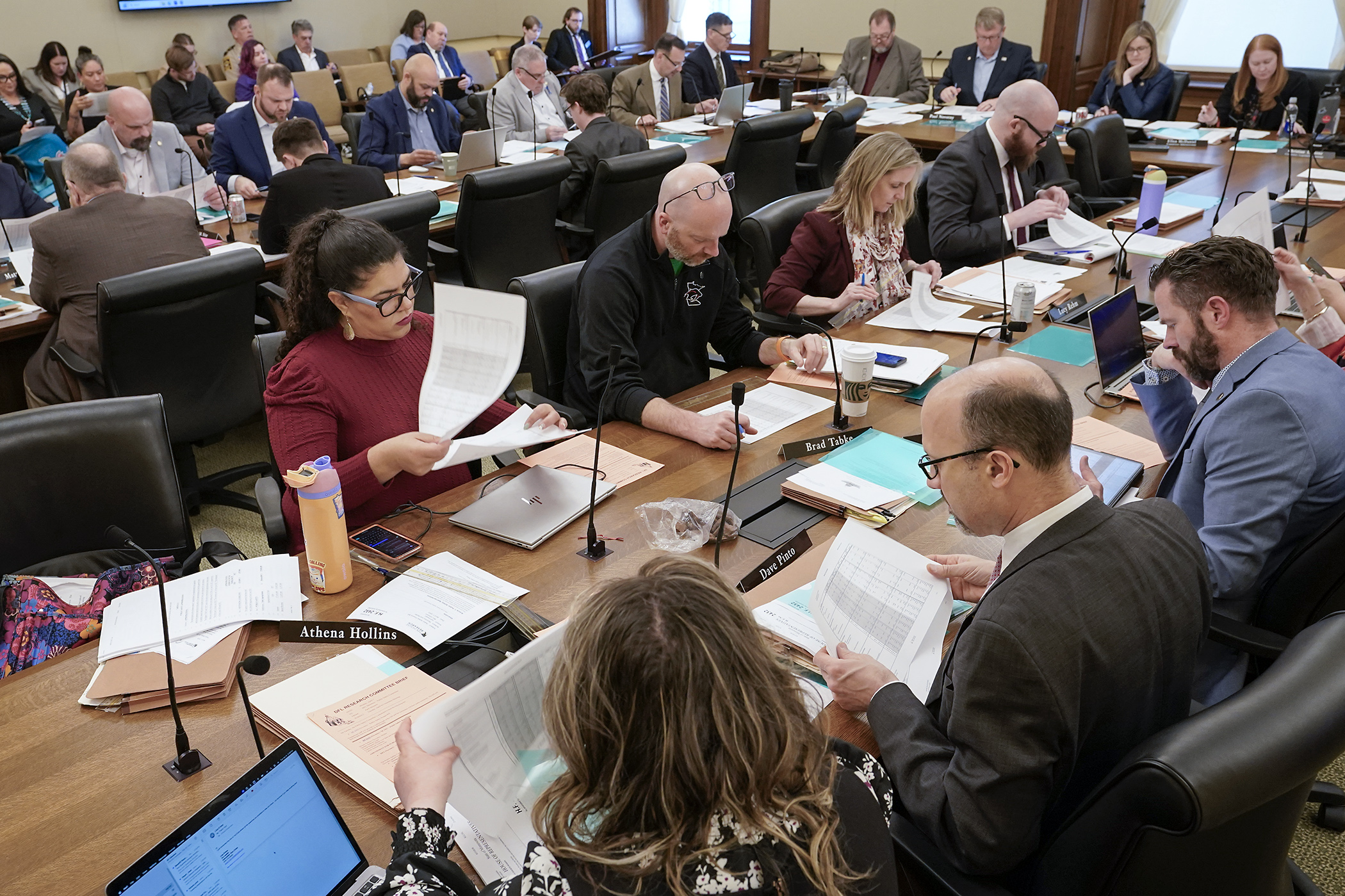Minnesota public safety officials warn of potential cuts under proposed budget

At $50 million, the House Public Safety Finance and Policy Committee has the second highest committee target set by House leaders for budget increases.
But at the same time, Gov. Tim Walz directed the committee to find operational savings of $116 million in the 2026-27 biennium at departments and agencies under the committee’s purview.
Committee Co-chair Rep. Paul Novotny (R-Elk River) summed up that situation Tuesday when the committee unveiled its omnibus finance and policy bill, HF2432, which he sponsors. “Nobody got what they wanted. Some got a lot less than they wanted.”
Co-chair Rep. Kelly Moller (DFL-Shoreview) put it differently in conveying the same frustrations. “Even if we had put all of our $50 million for each biennium into those operating adjustments, we would still fall very short of what is needed.”
[MORE: View governor’s public safety and corrections budget recommendations]
With those constraints in place, the committee crafted an omnibus finance bill that would appropriate $2.23 billion in the upcoming biennium for the Department of Public Safety, Department of Corrections, Minnesota Sentencing Guidelines Commission, Peace Officer Standards and Training Board, Private Detective Board, Ombudsperson for Corrections, and Clemency Review Commission.
The committee heard walkthroughs of a delete-all amendment to the bill and a fiscal spreadsheet, and took public testimony. A committee vote is expected Wednesday.
Public testimony
Public Safety Commissioner Bob Jacobson is concerned the proposed operational adjustment — lower than the governor’s request — would not offset higher costs for things like health insurance and salaries, much less allow any new staffing or programming.
“We could potentially go backwards as an agency. … The BCA and Alcohol and Gambling Enforcement will likely need to cut sworn peace officer positions.”
Nor would the department be able to afford rent on the new statewide emergency operations center scheduled to be completed this spring. “The building will sit empty.”
Corrections Commissioner Paul Schnell expressed similar concerns, saying the slimmed-down operating budget for prisons will likely lead to layoffs. “The DOC will struggle to maintain safe staffing levels, let alone recommended staffing levels, reversing the incredible progress we have made.”
Rehabilitation and educational programs would also need to be scaled back, Schnell added, meaning more lockdowns are likely, leading to more idle time for inmates. Reducing or eliminating rehabilitation programs “undermines the very safety of our communities.”
What would $2.23 billion pay for?
The two biggest state agencies to be funded by the bill would be the Department of Corrections at $1.63 billion and the Department of Public Safety at $555.55 million.
Within corrections, the bill would appropriate:
- $1.12 billion for incarceration and pre-release services;
- $378.74 million for community supervision and post-release services; and
- $113.12 million for administration.
Within public safety, the bill would appropriate:
- $226.02 million for the Bureau of Criminal Apprehension;
- $107.66 million for the Office of Justice Programs;
- $153.19 million for emergency communications networks;
- $51.13 million for the Fire Marshal and Board of Firefighter Training;
- $9.77 million for Homeland Security and Emergency Management; and
- $3.9 million for Gambling and Alcohol Enforcement.
Other funding provisions include:
- $24.43 million for the Peace Officer Standards and Training Board, including $11 million for the Philando Castile Memorial Training Fund to support and strengthen law enforcement training;
- $3 million for the Sentencing Guidelines Commission; and
- $2.16 million for the private detective board.
Notable policy changes
The bill would increase civil marriage license fees by $10 and send the additional dollars to a newly created Minnesota victims of crime account that would fund the Office of Justice Programs within the Department of Public Safety to provide grants to crime victim services providers for direct services and advocacy for victims of sexual assault, general crime, domestic violence and child abuse. The bill would also appropriate $2 million annually into the account.
A mandatory 10-year minimum sentence would be established for a person found guilty of first-degree sex trafficking and a mandatory minimum sentence of 12 years for a person guilty of an aggravated offense.
A fraud bureau in the Commerce Department would be moved to the Bureau of Criminal Apprehension.
Other proposed changes to civil law statutes include:
- making it a crime to knowingly cause or permit a child or vulnerable adult to be exposed to, have contact with, or ingest fentanyl;
- extending the statute of limitations for first-degree arson from five to 10 years;
- requiring prisons to maintain an ample supply of opiate antagonists (Narcan) to enable staff to rapidly respond to opioid overdoses; and
- mandating consecutive or executed sentences for a person who commits an assault against a sheriff or sheriff’s deputy while the person is an inmate of a local correctional facility.
***
The following are selected bills that have been incorporated in part or in whole into the omnibus public safety finance bill:
Related Articles
Search Session Daily
Advanced Search OptionsPriority Dailies
Speaker Emerita Melissa Hortman, husband killed in attack
By HPIS Staff House Speaker Emerita Melissa Hortman (DFL-Brooklyn Park) and her husband, Mark, were fatally shot in their home early Saturday morning.
Gov. Tim Walz announced the news dur...
House Speaker Emerita Melissa Hortman (DFL-Brooklyn Park) and her husband, Mark, were fatally shot in their home early Saturday morning.
Gov. Tim Walz announced the news dur...
Lawmakers deliver budget bills to governor's desk in one-day special session
By Mike Cook About that talk of needing all 21 hours left in a legislative day to complete a special session?
House members were more than up to the challenge Monday. Beginning at 10 a.m...
About that talk of needing all 21 hours left in a legislative day to complete a special session?
House members were more than up to the challenge Monday. Beginning at 10 a.m...